100 East Fine Jewelry’s focus is COLOR. Virtually all our jewelry pieces contain colored gemstones inspired by, among other things, the colors and beauty of nature. We recently visited The Butterfly Farm on the Caribbean Island of Aruba, where we were able to walk among, photograph and learn about these amazingly colorful and beautiful creatures. Here are a few cellphone pictures:
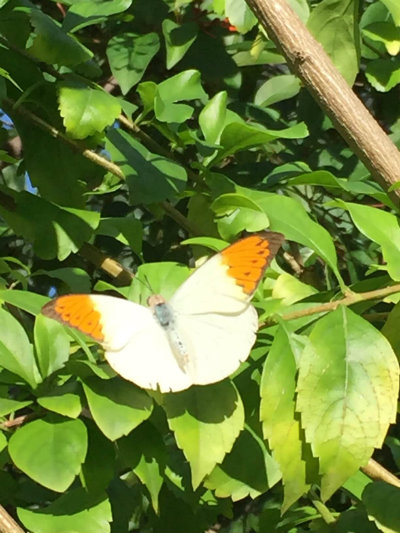 orange tips, like our orange sapphire earrings
orange tips, like our orange sapphire earrings 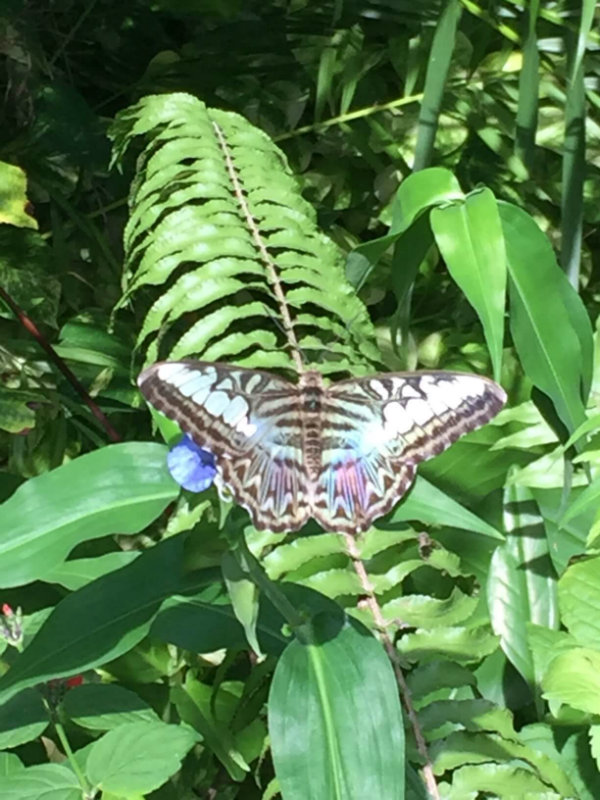 pink/lavender highlights on black and white like our pink
sapphire dangling Earrings
pink/lavender highlights on black and white like our pink
sapphire dangling Earrings 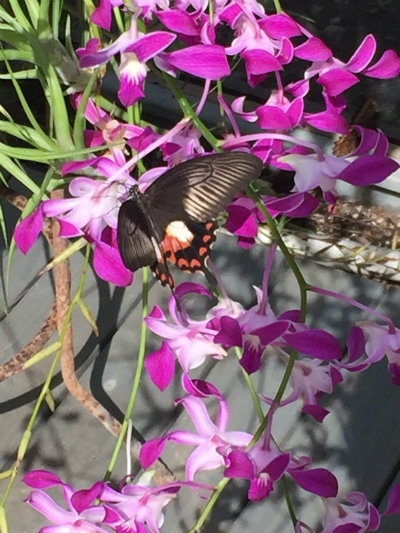 orangy red spots on black and white like Oregon
sunstone earrings in white gold and Oregon
sunstone earrings in yellow gold
orangy red spots on black and white like Oregon
sunstone earrings in white gold and Oregon
sunstone earrings in yellow gold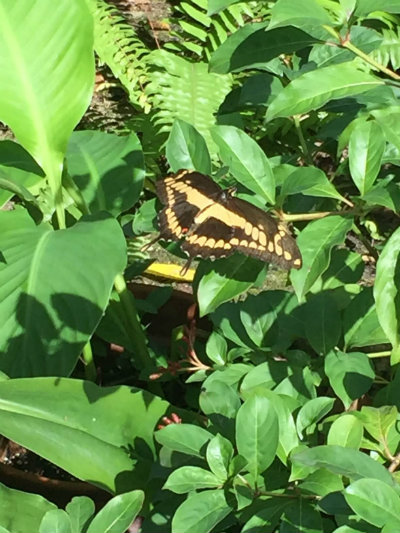 yellow on black like our yellow
sapphire earrings
yellow on black like our yellow
sapphire earrings
The farm’s website, www.thebutterflyfarm.com and their Facebook page contain additional photos, including one beautiful species we couldn’t photograph because it was just too active – the Blue Morpho.
A brief history of The Butterfly Farm. In 1994, two eccentric Englishmen decided to create a butterfly farm on the French side of the Caribbean Island of St. Martin/St. Maarten. In 1999, after a number of hurricanes hit St. Martin, the founders decided to create a second farm on Aruba, which lies outside the hurricane zone. The Aruba farm is a lush, open air, net-enclosed tropical garden with small fish ponds and dozens of butterfly species freely flitting among the plants. An area is also dedicated to observing the butterfly life cycle, as seen below in the butterfly and chrysalis photo.
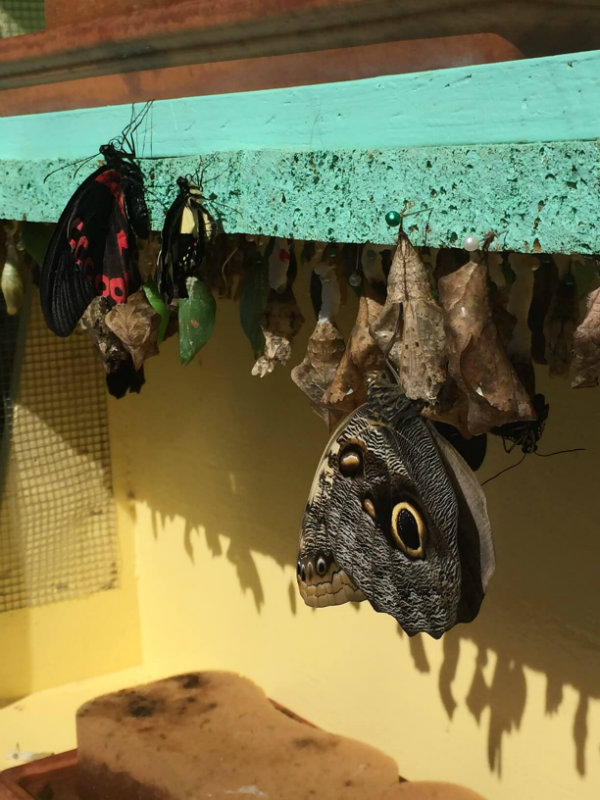
In addition to providing education about and contact with butterflies, the Farm is dedicated to helping save endangered species. To this end, they offer seminars on butterfly-friendly gardening and techniques for properly raising them.
Our knowledgeable guide provided us with a wealth of information, which we're sharing below. Much of this may be familiar, but some may be new to you.
- Butterflies are found on every continent except Antarctica.
- Butterflies and moths are related and have much in common. Butterflies are generally larger and brightly-colored while moths are generally drab. Almost all butterflies are active during the day, while most moths are active at night. The easiest way to tell the difference between a moth and butterfly is by the antennae.
- A butterfly’s wings are actually clear. The colors and patterns we see are made by reflections from tiny scales which cover them. It's a myth that touching a butterfly’s wing causes the ‘powder’ to rub off and the butterfly won't be able to fly. Butterflies shed these scales (the ‘powder’) throughout their lifetime.
- Butterflies are members of the insect family. There are 4 stages to their life cycle:
- Egg – 5-10 days until they hatch
- Caterpillar – 2-4 weeks; during that time, it outgrows and sheds its skin 4-5 times
- Chrysalis/pupa – 10 to 15 days for the body to liquify and transform into a butterfly
- Butterfly - the average life span is about 2 weeks. Some species live a few days; others up to 9 months.
- Caterpillars and butterflies are important parts of the food chain. About 98% of butterfly eggs never reach adulthood due to predators, disease, herbicides and insecticides, weather, parasites, etc.
- A female selects a mate by the size of his wings, the vibrance of their color and the strength of his pheromones
- The male’s pheromones are unique to a species, preventing cross-species breeding
- The Queen Alexandra's Birdwing, with a wing span of about 11 inches is the world’s largest butterfly. It is also the rarest; found only in the rain forests of New Guinea.
- The smallest butterfly, the Pygmy Blue with a wingspan of about ½ inch, is found in the southern United States.
- The most common butterfly is the Cabbage White
- Some species, like the Monarch and Painted Lady, migrate over long distances. These migrations take place over multiple generations. No single butterfly completes the round trip
- Courtship is often aerial, but male and female butterflies mate on the ground or a perch. Egg fertilization may last from minutes to days. (Don't try this at home!)
- Harvester butterfly caterpillars eat aphids, but virtually all other caterpillars eat plant materials (leaves, seeds, seed pods or flowers).
- Butterflies lay eggs only on specific food plants their caterpillars will feed upon. Many butterflies have taste receptors in their feet which allow them to identify the proper plants
- Butterflies feed primarily on flower nectar. Some live off pollen, tree sap, rotting fruit, dung, decaying flesh, and dissolved minerals in wet sand or dirt
- Butterflies soak up their food through a long, tube-like tongue called a proboscis. The proboscis rolls up when not needed
- Butterflies are essentially cold-blooded and cannot fly if their body temperature is below 84 degrees
- Most butterflies fly at speeds between 5 and 12 miles per hour
- Butterflies use four main methods of protection
from predators; camouflage, poison, mimicry and flight. Camouflage and flight are obvious.
Something about the others:
- Poison - Some butterflies feed off poisonous plants; storing the toxin in their bodies. When a predator eats one, it becomes sick, learning not to eat this type of butterfly
- Mimicry – There are 2 forms of mimicry. One is when a non-poisonous butterfly species has markings similar to a poisonous species; gaining protection from this similarity. The second form is when a butterfly has large spots on its wings which resemble eyes. This fools potential predators into thinking it is a much larger and threatening animal. A great example from the Butterfly Farm is the Owl Butterfly. They are known for the large dark "eye spots" on the underside of their wings that resemble an owl's eye. An Owl Butterfly is prominently seen in the top photo of the chrysalis.
